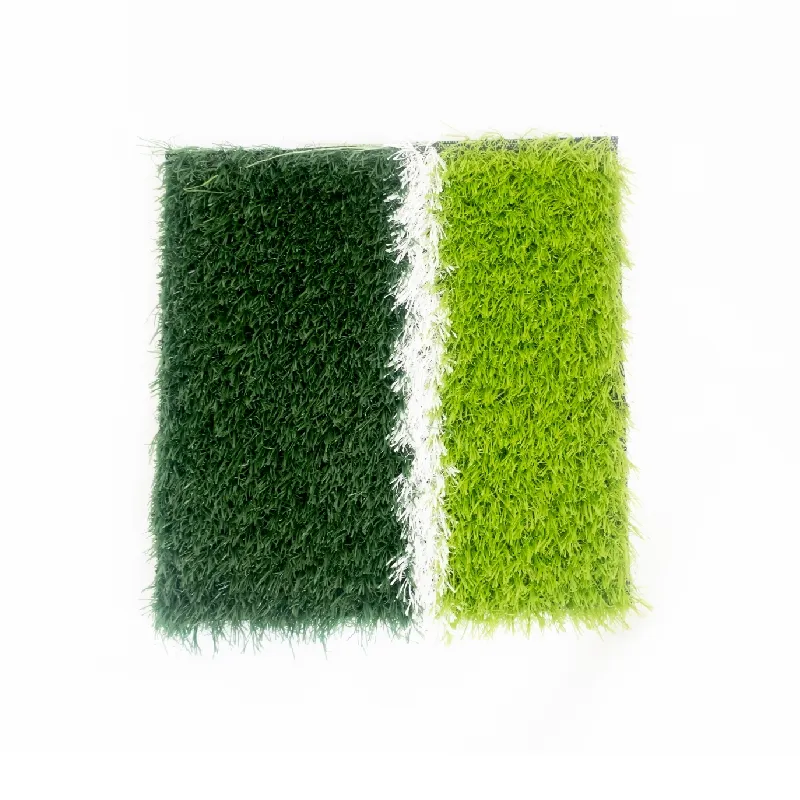
- Afrikaans
- Arabic
- Belarusian
- Bengali
- Czech
- Danish
- Dutch
- English
- Esperanto
- Estonian
- Finnish
- French
- German
- Greek
- Hindi
- Hungarian
- Icelandic
- Indonesian
- irish
- Italian
- Japanese
- kazakh
- Rwandese
- Korean
- Kyrgyz
- Lao
- Latin
- Latvian
- Malay
- Mongolian
- Myanmar
- Norwegian
- Persian
- Polish
- Portuguese
- Romanian
- Russian
- Serbian
- Spanish
- Swedish
- Tagalog
- Tajik
- Thai
- Turkish
- Turkmen
- Ukrainian
- Urdu
- Uighur
- Uzbek
- Vietnamese
artificial turf soccer pitch
Sep . 24, 2024 18:45 Back to list
The Evolution and Benefits of Artificial Turf Soccer Pitches
In recent years, the world of soccer has witnessed significant advancements in the development of playing surfaces, with artificial turf soccer pitches gaining immense popularity. What was once considered a controversial alternative to natural grass has now become a staple in sports facilities across the globe. This shift can be attributed to a multitude of factors, including durability, maintenance, performance, and versatility. Understanding these attributes helps elucidate why artificial turf has become an essential element in modern soccer.
Historical Context
The origins of artificial turf dates back to the 1960s when the first version was installed in the Astrodome in Houston, Texas. Initially intended for American football, turf technology rapidly evolved, finding its way into soccer fields across the United States and Europe. Over the decades, innovations in materials and production techniques resulted in a product that closely mimicked natural grass while addressing its various limitations.
Durable and Weather-Resistant
One of the most significant advantages of artificial turf soccer pitches is their durability. Unlike natural grass, which requires consistent sunlight, water, and periodic rest to maintain its quality, synthetic turf can withstand high levels of foot traffic and various weather conditions. This resilience means that clubs can schedule more games and training sessions without the fear of damaging the field. Rain-soaked natural pitches can become muddy and unplayable, while artificial turf allows for year-round play, ensuring that teams keep up their competitive edge regardless of the season.
Minimal Maintenance
The maintenance of natural grass requires a dedicated team and significant financial resources. Regular mowing, watering, fertilizing, and pest control can take a toll on budgets and manpower. Conversely, artificial turf drastically reduces these requirements. Although initial installation costs may be high, the long-term savings on maintenance make it a cost-effective choice. The occasional brushing, infill replenishment, and cleaning are the main upkeep tasks, which translates to fewer staff hours and lower maintenance costs for soccer clubs.
artificial turf soccer pitch

Consistent Playing Surface
Athletes and coaching staff often emphasize the importance of consistent playing surfaces to enhance performance. Variability in natural grass fields can lead to unexpected bounces and uneven footing, potentially increasing the risk of injuries. Artificial turf, engineered for uniformity, provides a consistent playing experience that helps players focus on their game without distraction. Studies have shown that players can enjoy better traction on turf, allowing for quicker, more agile movements and improved ball control.
Versatile Usage
Artificial turf pitches are incredibly versatile, making them suitable for a wide range of sports beyond soccer. This flexibility makes them an attractive investment for sports facilities, schools, and communities. Hockey, rugby, lacrosse, and football can all utilize the same surface, maximizing the use of the facility and accommodating various athletic programs. Additionally, many artificial turf pitches are designed to include markings for multiple sports, further enhancing their utility.
Environmental Considerations
While some may argue that synthetic turf raises environmental concerns due to the use of plastics, modern developments have introduced eco-friendly options. Many manufacturers are now creating turf made from recycled materials, and initiatives are being launched to promote sustainable disposal once the turf reaches the end of its life cycle. Furthermore, the reduction of water usage associated with maintaining natural grass means that artificial turf can play a beneficial role in water conservation efforts, especially in regions prone to drought.
Conclusion
As artificial turf technology continues to improve, the benefits it offers make it an increasingly attractive option for soccer pitches worldwide. Its durability, low maintenance requirements, consistent playing surface, and adaptability for various sports are significant advantages that cannot be ignored. The environmental considerations surrounding synthetic turf are also evolving, making it a viable option for sustainable sports facilities. As a new generation of players steps onto these innovative surfaces, it is evident that artificial turf soccer pitches are not just a fleeting trend but a transformative development in the world of sports. The future of soccer is here, and it is green—whether in color or concept—enabling young athletes to play the game they love regardless of the weather or season.
-
The Benefits of Artificial Turf for Indoors
NewsJul.15,2025
-
How Artificial Grass Suppliers Ensure Quality Products
NewsJul.15,2025
-
Artificial Grass and Pets: A Space for Relaxation
NewsJul.08,2025
-
Balcony & Outdoor Decoration with Artificial Grass
NewsJul.08,2025
-
Best Indoor Artificial Grass for Home
NewsJul.07,2025
-
Best Pet Turf for Dogs: Safe & Durable Artificial Grass Options
NewsJul.07,2025
Products categories









